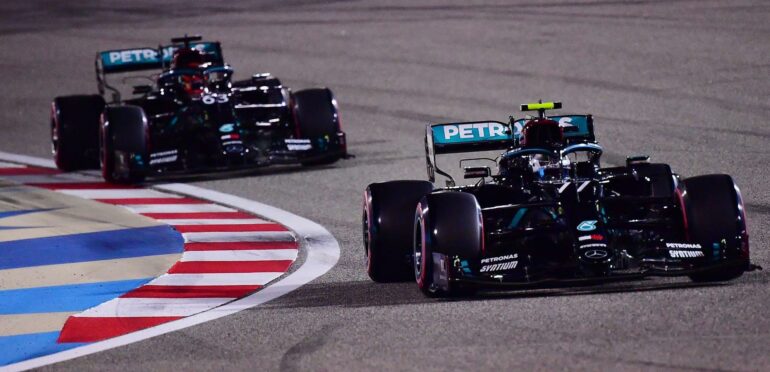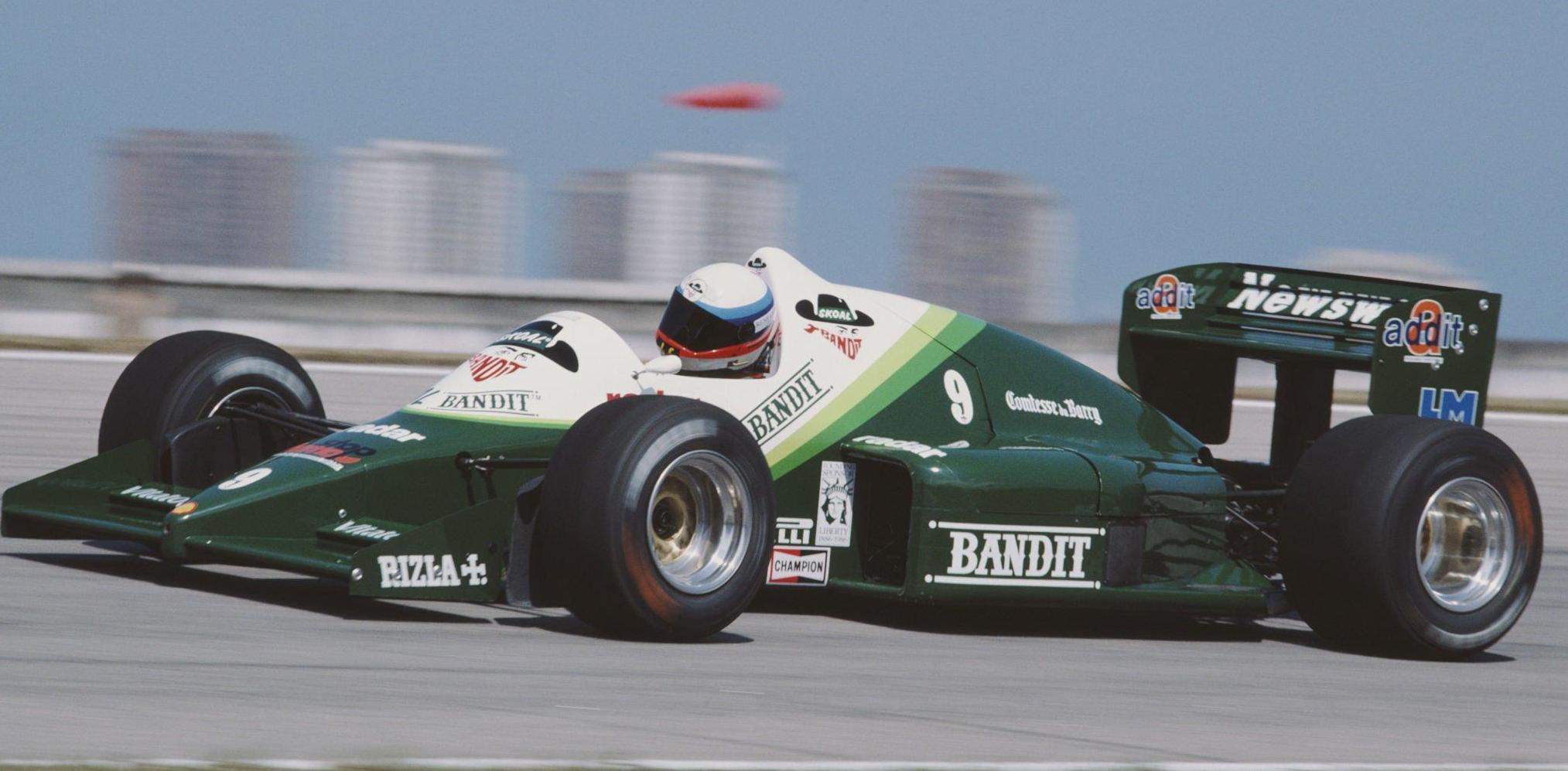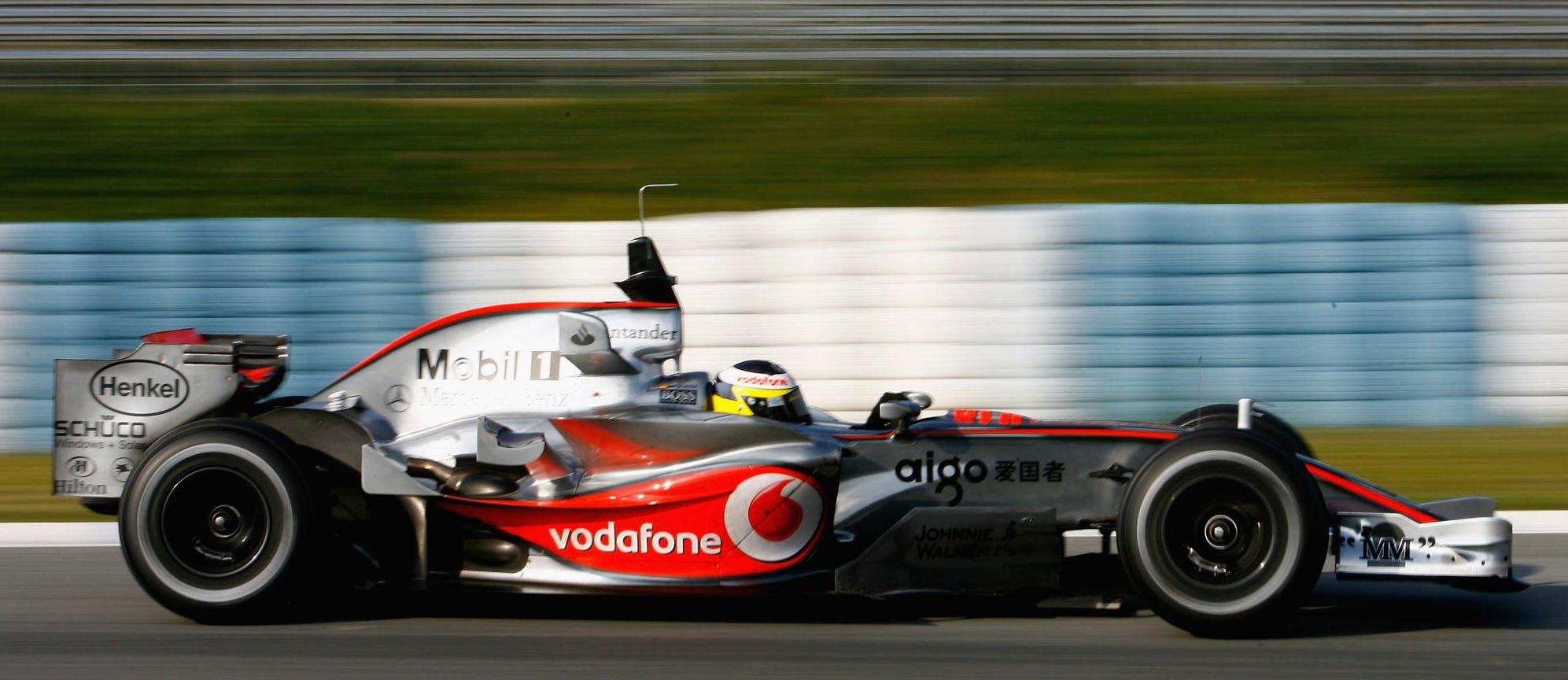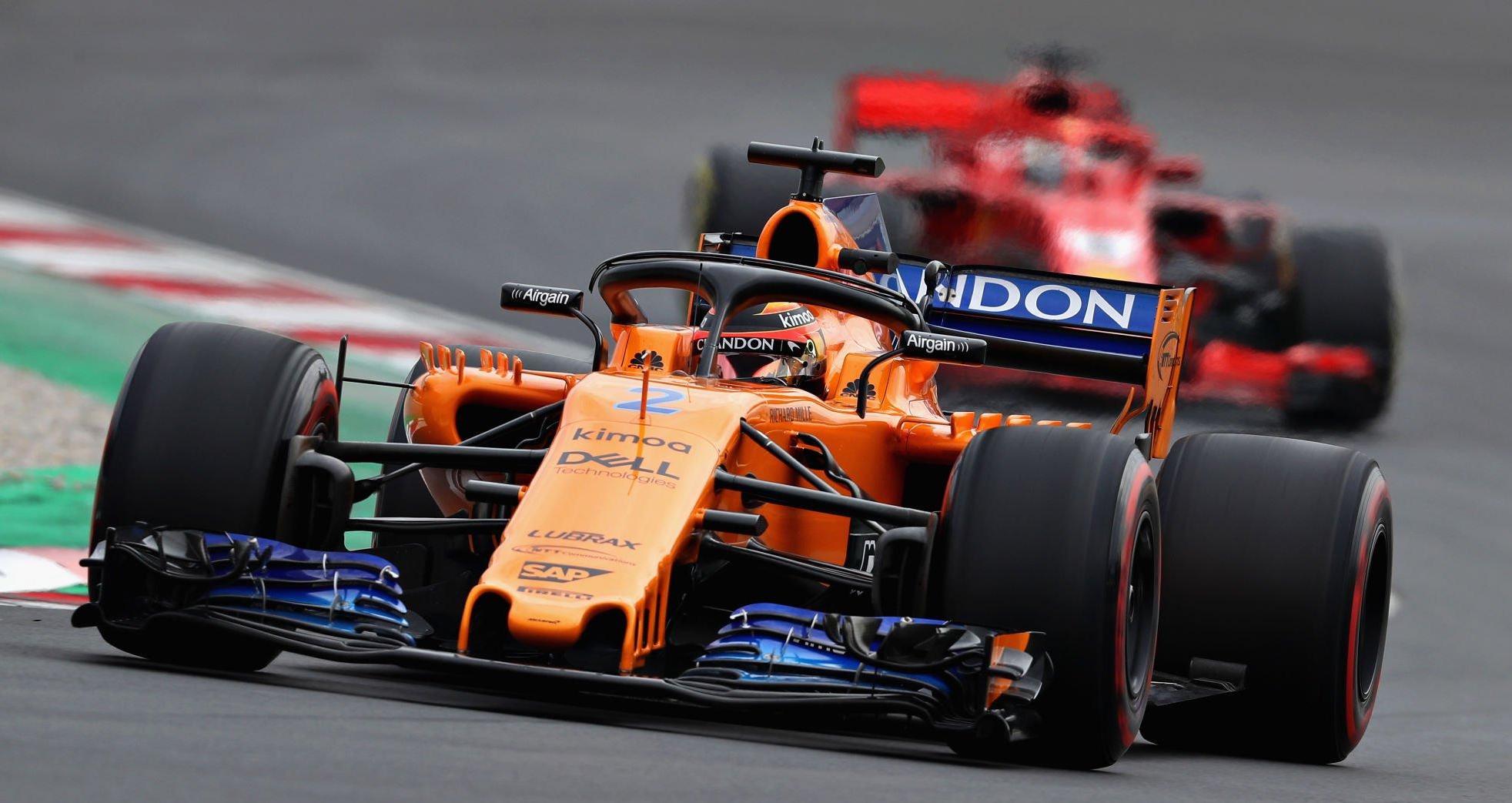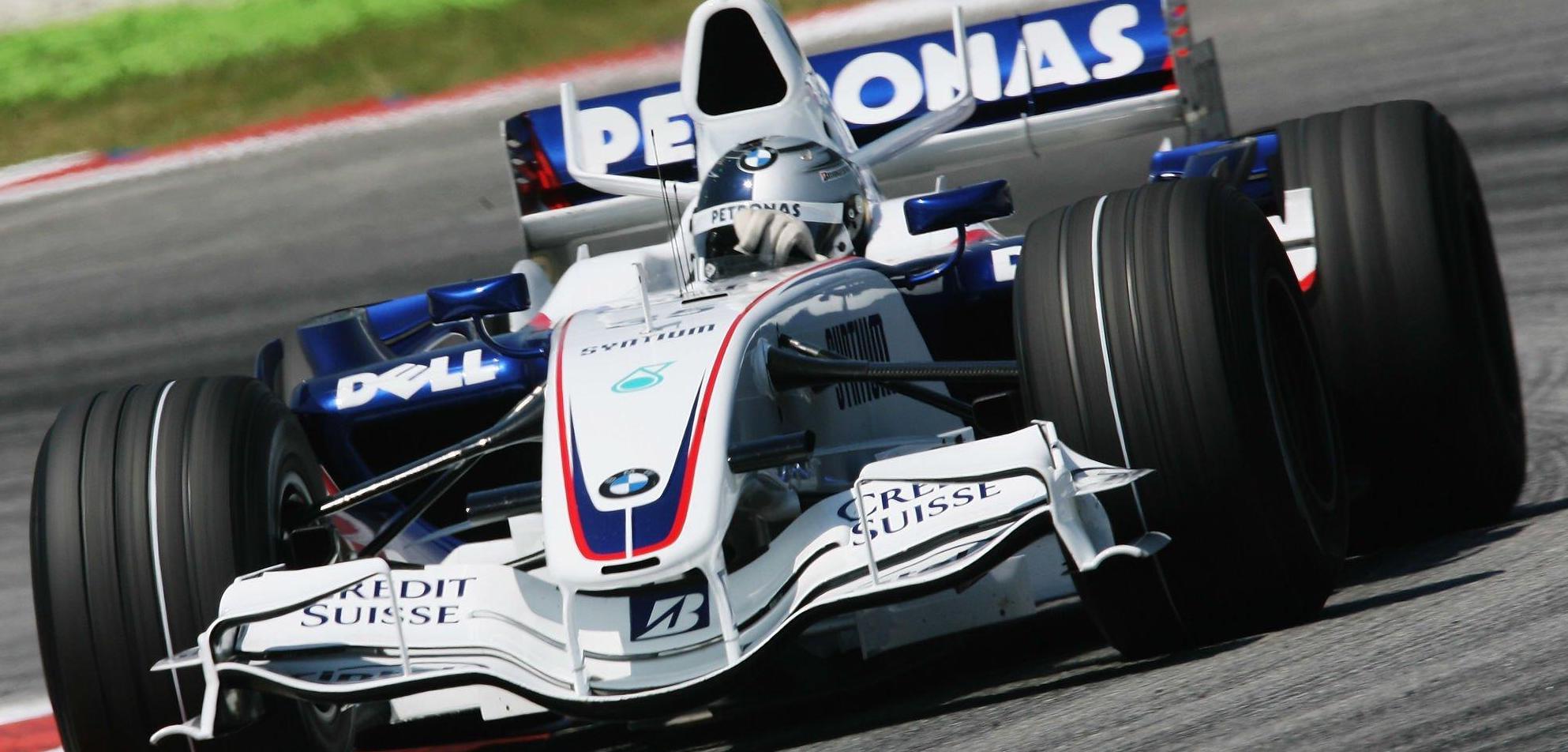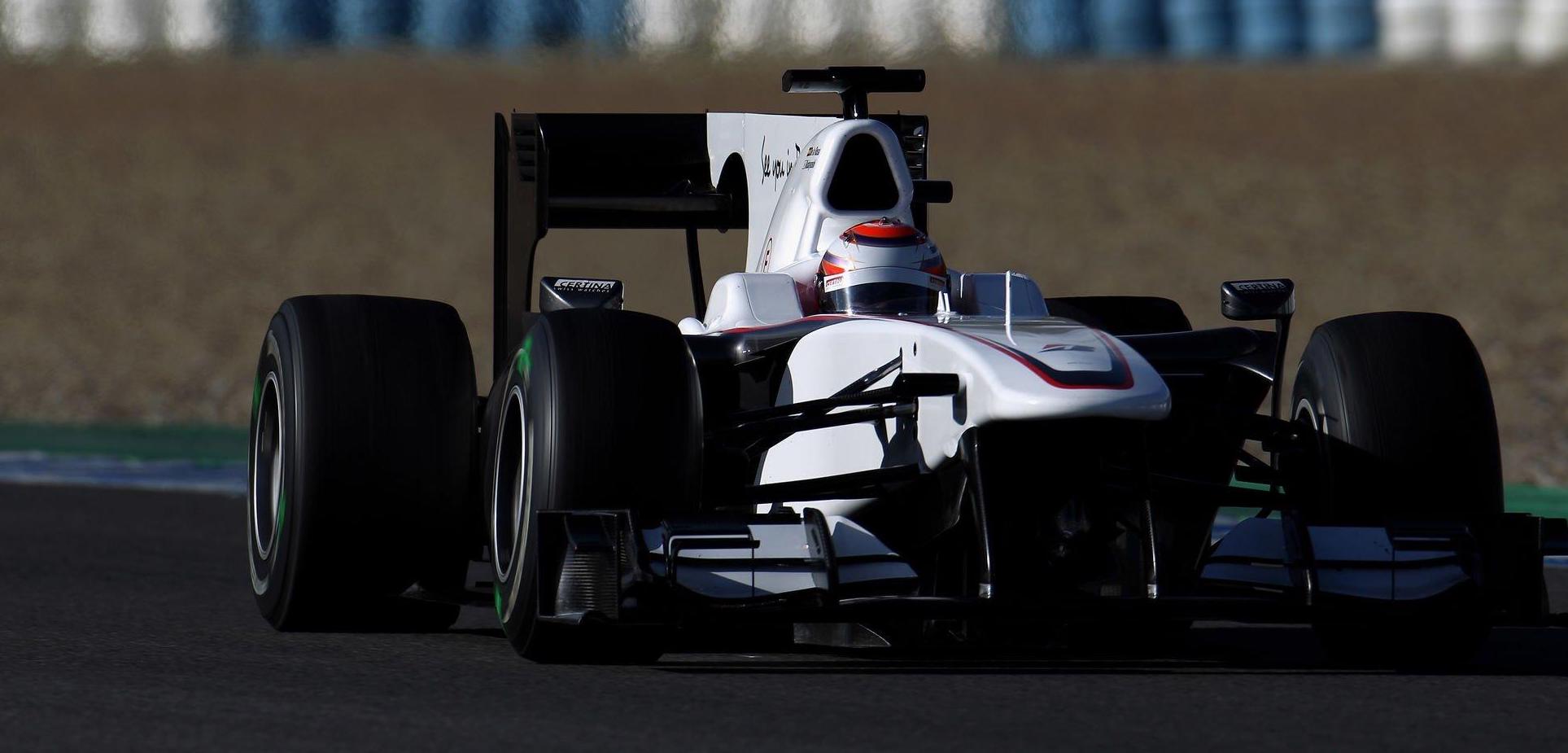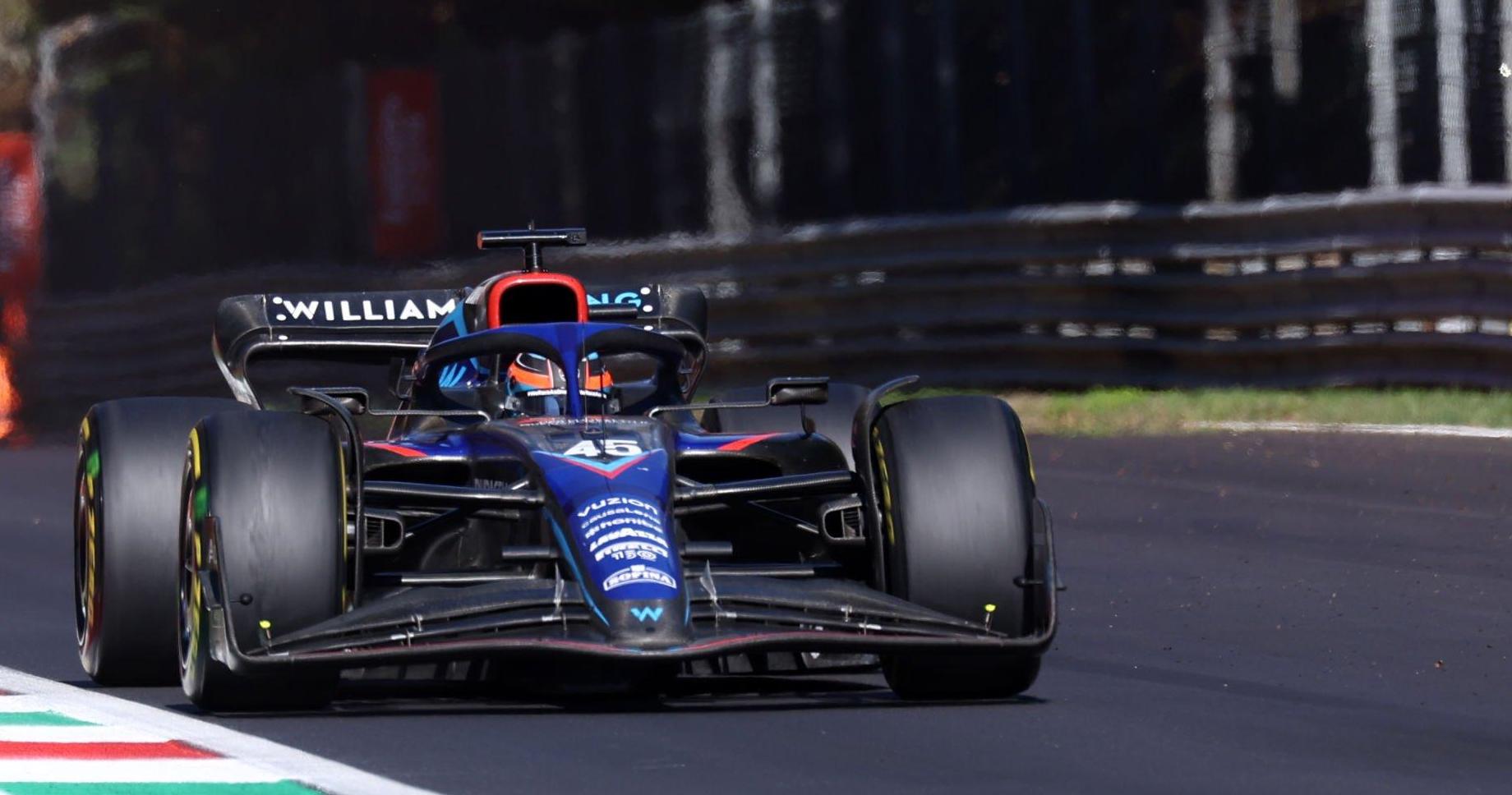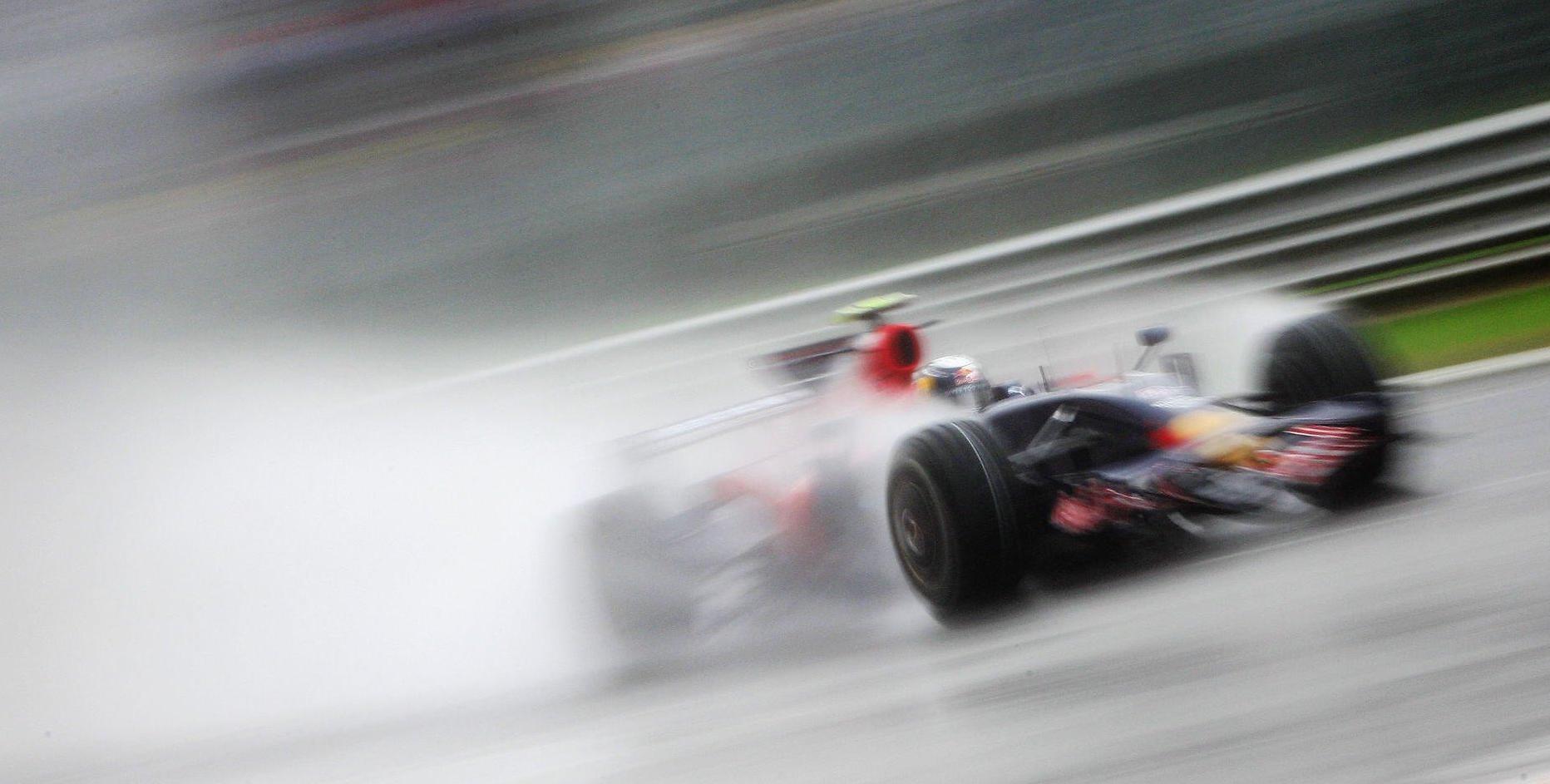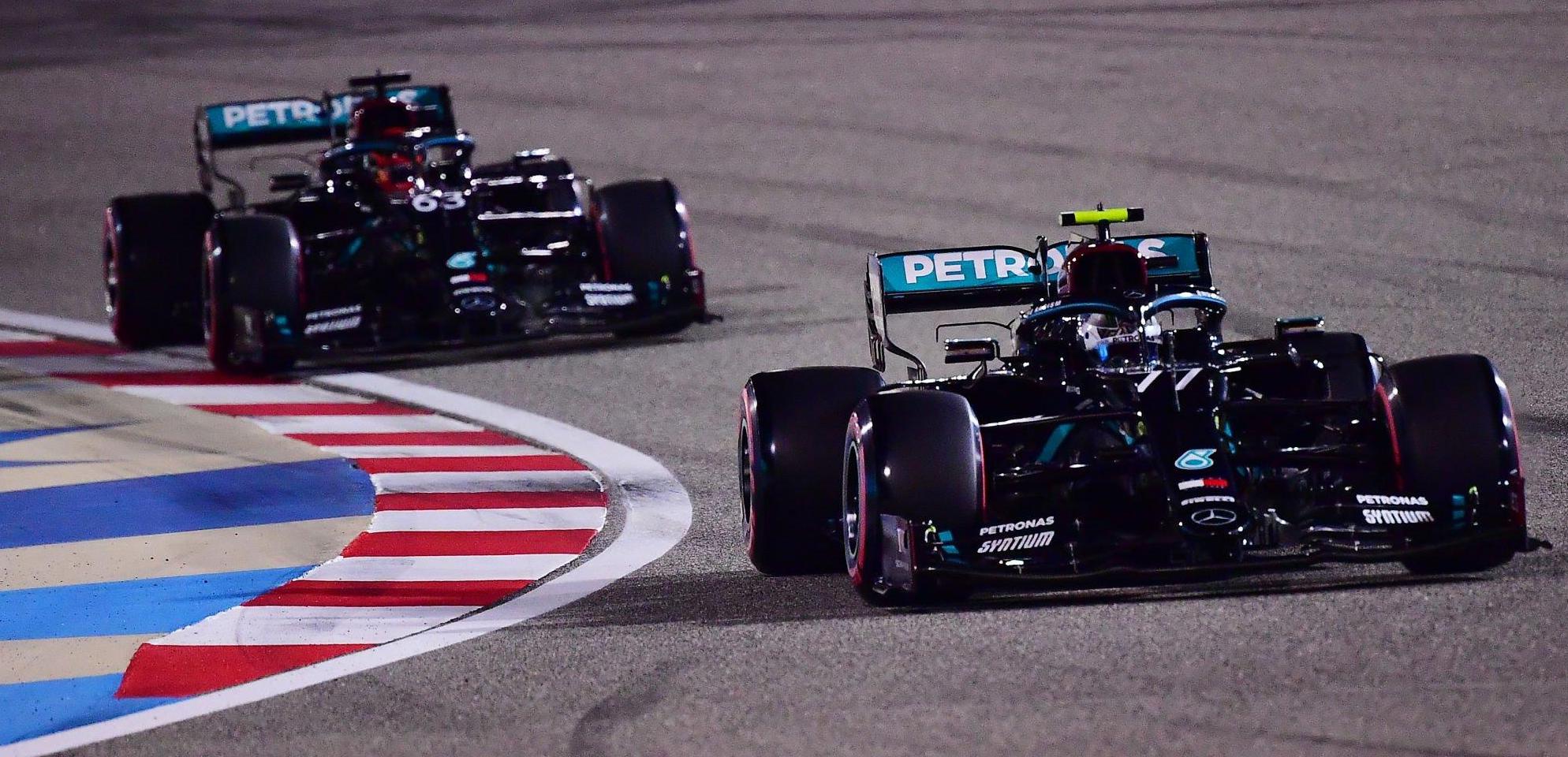In the high-stakes world of Formula 1, a simple change of driver can either catapult a season to glory or send it spiraling into obscurity. Some swaps have been akin to rolling the dice with uncertain outcomes, while others have acted as the launchpad for a driver’s career in the prestigious Formula 1 circuit.
Liam Lawson’s current journey at AlphaTauri exemplifies how a mid-season switch can transform a driver’s trajectory, causing their stock to surge in the ever-fluctuating driver market. As we eagerly anticipate whether Lawson’s stint as Daniel Ricciardo’s substitute at AlphaTauri has concluded, it’s worth pondering how he measures up against his 21st-century counterparts.
Our top ten list delves into the realm of mid-season driver changes, encompassing one-off substitute appearances driven by diverse motives such as injuries, sponsorships, and driver unavailability. Rather than just assessing upgrades in driver caliber, we’ve focused on instances that produced significant “racing moments” or remarkable results, as opposed to mere improvements in performance.
For instance, the transition from Narain Karthikeyan to Daniel Ricciardo at Hispania Racing Team undoubtedly marked an improvement, but the car’s limitations prevented any substantial challenge for noteworthy victories.
With these criteria firmly established, let’s embark on a thrilling journey through the ten most monumental mid-season driver swaps of the 21st century, where talent, strategy, and fate converged to shape Formula 1’s ever-evolving narrative.
Number 1. Winkelhock for Albers, 2007, Spyker
In the annals of Formula 1 history, there are tales of underdogs defying the odds and creating moments of sheer magic. One such moment unfolded during the European Grand Prix when regular driver Christijan Albers found himself ousted from the back-of-the-grid Spyker team due to sponsor payment woes. The unexpected result? A debut in the F1 world for Markus Winkelhock, a driver whose junior record was respectable but not exactly extraordinary. Few had predicted a long stay for him in the high-speed world of Formula 1. Little did they know that his career would span just one unforgettable Grand Prix.
Winkelhock’s initial outings on the track didn’t set the world on fire with raw pace, but what he and the Spyker team accomplished that day would go down in history as one of the most astonishing underdog stories in recent memory. With rain clouds looming ominously over the Nurburgring circuit, Winkelhock and his team took a daring gamble. Just before the race began, they made the bold decision to pit for wet tires on the formation lap. It was a move that raised eyebrows but would ultimately become a masterstroke.
As the heavens unleashed their fury, the rain poured down with unparalleled intensity. Winkelhock’s audacious tire choice propelled him from the back of the grid to the front, building a lead of over half a minute. It was a mesmerizing surge to the top, one that had fans and pundits alike on the edge of their seats. However, fate had other plans in store. Red flags unfurled, halting the race and erasing Winkelhock’s remarkable lead.
Had the rain persisted with the same ferocity, we might have witnessed the crowning of one of Formula 1’s most improbable point scorers. Markus Winkelhock’s brief and brilliant foray into the world of Formula 1 remains etched in memory as a testament to the unpredictable nature of motorsport and the indomitable spirit of the underdog.
Number 2. De la Rosa for Montoya, 2006, McLaren
In the world of Formula 1, unexpected twists and turns often create opportunities for unsung heroes. Such was the case when Juan-Pablo Montoya’s ties with the McLaren team were dramatically severed after the US Grand Prix. McLaren found themselves in a bind, and they turned to their trusted long-time test driver to step into the breach until further notice. Little did anyone know that this temporary arrangement would extend until the end of the season.
The McLaren team was navigating a challenging year, marked by struggles and frustrations. Even their hotshot teammate, Kimi Räikkönen, failed to secure a single race win. With this backdrop, there wasn’t an overwhelming burden of expectation on Pedro de la Rosa to consistently challenge for podium finishes.
However, De la Rosa, with his experience in various cars and a history of stepping in when needed, proved to be a dependable choice. While he may not have matched the sheer speed of Räikkönen, he performed admirably in the challenging circumstances. The highlight of his career during this stint came at the Hungarian Grand Prix, a race characterized by tricky wet conditions. De la Rosa showcased his prowess by clinching an impressive career-best second place, leaving fans and pundits in awe of his capabilities.
Throughout his tenure, Pedro de la Rosa consistently secured points finishes, ultimately boasting a point-per-race ratio similar to that of Juan-Pablo Montoya. It was a testament to his skill and adaptability, even in the face of challenging circumstances.
In a season where McLaren faced numerous obstacles, Pedro de la Rosa emerged as a reliable and commendable figure, proving that in Formula 1, the unexpected can often lead to moments of brilliance and resilience.
Number 3. Vandoorne for Alonso, 2016, McLaren
In the high-octane world of Formula 1, opportunities often arise from unexpected twists of fate. Such was the case when Fernando Alonso, the two-time World Champion, found himself sidelined after a spectacular crash during the previous race in Australia. The Bahrain Grand Prix beckoned, and McLaren called upon their development driver, Stoffel Vandoorne, the 2015 GP2 champion, to step into the spotlight alongside Jenson Button.
Vandoorne had long been hailed as one of the brightest talents to emerge from the feeder series, and there was palpable frustration in the Formula 1 community when he couldn’t secure a seat for the 2016 season. However, this one-off race presented the perfect opportunity for Vandoorne to make his presence felt on the big stage.
In his maiden Formula 1 qualifying session, Stoffel Vandoorne not only demonstrated his potential but also sent shockwaves through the paddock by outqualifying his World Champion teammate, Jenson Button. It was a remarkable feat for a debutant, showcasing his raw talent and adaptability.
Race day brought its own set of challenges. While Vandoorne was passed by Button on the opening lap, he displayed remarkable composure and skill as he navigated the Bahrain circuit. In a McLaren that wasn’t a guaranteed points finisher that season, Vandoorne raced competently and tenaciously. His determination paid off as he clinched a valuable point, making an indelible mark by securing points on his debut in Formula 1—a feat not often achieved in a car of uncertain performance.
Stoffel Vandoorne’s Bahrain debut was not only a personal triumph but also a testament to the resilience and potential of young talents in Formula 1. It was a day when he added his voice to the chorus of those who believed he deserved a permanent place on the grid, and his performance left fans and pundits eager to see more of his racing prowess in the seasons to come.
Number 4. Vettel for Kubica, 2007, BMW
In the world of Formula 1, the unexpected can often pave the way for the emergence of future legends. Such was the case when Robert Kubica’s terrifying crash at the Canadian Grand Prix left BMW scrambling for a replacement driver for the upcoming United States Grand Prix. In a bold move, they turned to their test driver, the young Sebastian Vettel, to fill the void.
Vettel’s journey at the United States GP began with a strong qualifying performance, where he closely matched the skills of his experienced teammate, Nick Heidfeld. Despite a heart-pounding off-track moment at Turn 1, Vettel showcased his mettle and determination as he fought back, ultimately securing a valuable championship point in his debut race. This remarkable achievement did not go unnoticed, catching the keen eye of future employers within the Red Bull Racing team.
While Sebastian Vettel may not have been the youngest driver to start a Formula 1 Grand Prix at the time, he etched his name in the record books by becoming the youngest driver ever to score a Formula 1 point. Subsequently, this record has been eclipsed by the likes of Daniil Kvyat, Max Verstappen, Lance Stroll, and Lando Norris. Nevertheless, Vettel’s accomplishment on that memorable day marked the debut of an emerging talent and set the stage for a career filled with remarkable achievements and championships.
Sebastian Vettel’s sensational debut was not just a personal triumph but also a testament to the exceptional talent that graces the world of Formula 1. It was a moment that heralded the arrival of a star in the making, destined to leave an indelible mark on the sport’s history.
Number 5. Kobayashi for Glock, 2009, Toyota
In the world of Formula 1, talent often shines through even in the most unexpected of circumstances. Kamui Kobayashi’s journey to the pinnacle of motorsport was far from conventional. With an unremarkable GP2 record that didn’t immediately mark him as a Formula 1 contender, he received an unexpected opportunity at the Brazilian Grand Prix.
The stage was set when Timo Glock, a regular driver for Toyota, was sidelined due to an unfortunate crash at Suzuka. In a bold move, the Toyota junior driver, Kamui Kobayashi, was called upon to make his Formula 1 debut.
Kobayashi’s first race in Brazil didn’t see him matching the pace of his temporary teammate, Jarno Trulli, right out of the gate. However, what he lacked in experience, he compensated for with an audacious and fearless racing style. His debut race left an indelible mark, not only for his on-track skills but also for a memorable collision with his compatriot, Kazuki Nakajima. This daring approach won him both admirers and critics, including the champion-elect of that season, Jenson Button.
The Japanese driver’s impressive performance earned him a chance to continue his Formula 1 journey. He was retained for the season finale in Abu Dhabi, where he raced to a commendable sixth place, ahead of his teammate Trulli. This standout performance ultimately secured him a coveted seat at Sauber for the 2010 season, marking the beginning of a remarkable career.
Kamui Kobayashi’s rise from an unexpected debut in Brazil to a full-time Formula 1 driver showcased not only his talent but also his resilience and determination. It was a story that defied expectations and added a unique chapter to the annals of Formula 1 history, solidifying Kobayashi’s place among the sport’s rising stars.
Number 6. De Vries for Albon, 2022, Williams
In the ever-evolving world of Formula 1, the journey from obscurity to the spotlight can be remarkably swift. The story of Nyck de Vries, the 2019 Formula 2 champion, is a testament to this rapid transformation. Within the span of just twelve months, he went from being a promising talent to a Formula 1 driver.
De Vries seized his long-awaited opportunity during the Italian Grand Prix when he stepped in to replace the unwell Alex Albon. The Dutch driver’s performance was nothing short of impressive as he delivered a strong drive, finishing in a commendable ninth place. Notably, this achievement equaled Williams’ best race result of the season, instantly propelling Nyck de Vries onto the radar of Formula 1 teams for the 2023 season.
However, his journey in the elite motorsport category took an unexpected turn. Despite signing with AlphaTauri for the 2023 season, De Vries struggled to match the blistering pace of his teammate, Yuki Tsunoda. After just ten races, his stint in the team came to an abrupt end.
Nyck de Vries’ Formula 1 journey serves as a reminder of the unpredictable nature of the sport. It showcases the highs and lows that young talents can experience in a short span of time. While his initial foray into Formula 1 garnered attention and promise, it also demonstrated the fierce competition and unforgiving nature of the sport at its highest level. The story of Nyck de Vries remains a compelling chapter in the ever-evolving narrative of Formula 1.
Number 7. Vettel for Speed, 2007, Toro Rosso
In the fiercely competitive world of Formula 1, Red Bull Racing has gained a reputation for its uncompromising approach to driver development. However, it was Sebastian Vettel who emerged as the first genuine race-winning prospect within the Red Bull talent pool. His journey began to unfold in 2007, marked by an impressive stand-in performance at BMW.
Vettel’s ascent to the Formula 1 spotlight took shape when he received the call to replace Scott Speed, whose performance hadn’t lived up to expectations. Joining the Toro Rosso team in what would prove to be a challenging year, Vettel was granted the opportunity to acclimate himself without the intense glare of the spotlight.
As the season progressed, Vettel’s potential began to shine through. The turning point came at the Fuji Speedway, where he delivered a stellar drive that hinted at his future greatness. Unfortunately, his race ended prematurely due to a collision with his future teammate, Mark Webber, but it was a sign of things to come.
Sebastian Vettel wasted no time in making amends for his misfortune. At the following Chinese Grand Prix, he put on an impressive display, finishing a remarkable fourth. This achievement underscored his talent and determination, marking him as a rising star in the world of Formula 1.
Sebastian Vettel’s journey with Toro Rosso was the first chapter in a remarkable career that would see him rise to the pinnacle of the sport. His early performances demonstrated the promise of a young driver who would go on to achieve great success in Formula 1, firmly establishing his place among the sport’s legends.
Number 8. Kubica for Villeneuve, 2006, BMW
In the world of Formula 1, careers can take unexpected turns, and for 1997 World Champion Jacques Villeneuve, 2006 marked a low point in his journey. After being consistently outperformed by teammate Nick Heidfeld in the first 12 races of the season, Villeneuve and BMW decided to part ways. This decision opened the door for the emergence of a junior driver, Robert Kubica, who was about to make a lasting impression on the Formula 1 grid.
Kubica’s debut with BMW was nothing short of remarkable. Right out of the gate, he showcased his talent by out-qualifying his teammate Heidfeld. In his first race at the Hungarian Grand Prix, he was on track for a point-scoring finish before being disqualified due to unfortunate circumstances. However, this setback only served as motivation for the young driver.
The defining moment of Kubica’s early career came at Monza, where he delivered a brilliant performance. In only his third Grand Prix appearance, he secured a remarkable third-place finish. This achievement served as the springboard for what promised to be a bright and promising career in Formula 1.
Tragically, Kubica’s path to greatness was marred by a pre-season crash in 2011, which resulted in severe injuries and disrupted his Formula 1 journey. Despite the challenges that followed, his talent and determination continued to shine through, earning him a special place in the hearts of motorsport enthusiasts.
Robert Kubica’s meteoric rise from a stand-in driver to a podium finisher at BMW remains a memorable chapter in the annals of Formula 1 history. It’s a testament to the sport’s capacity to provide opportunities for young talents to shine, even in the most unexpected of circumstances, and to the indomitable spirit of drivers who overcome adversity to leave their mark on the world of motorsport.
Number 9. Russell for Hamilton, 2020, Mercedes
The 2020 Formula 1 season was like no other, heavily impacted by the global pandemic. One of its most remarkable moments occurred when seven-time World Champion Lewis Hamilton tested positive for Covid-19, causing him to miss the penultimate race of the season. In this unprecedented situation, Mercedes turned to their then-junior driver, George Russell, to partner Valtteri Bottas for a one-off appearance at the Sakhir Grand Prix.
The stage was set for Russell’s maiden opportunity to race in a championship-winning car. In a closely fought battle for pole position with his experienced teammate, Russell narrowly missed out but wasted no time asserting himself by taking an early lead in the race. It was a stunning start that held the promise of a dream debut.
However, fate had other plans. Russell’s remarkable race was marred by a series of unfortunate events. A mix-up with tire choices and a puncture dashed his hopes of a race win. In the end, he could only salvage a ninth-place finish, but his determination was evident as he also claimed the fastest lap of the race.
George Russell’s debut with the Mercedes team was a rollercoaster of emotions, showcasing his raw talent and ability to adapt to a high-pressure situation. While the final result might not have reflected his exceptional performance, his impressive showing left an indelible mark and earned him the respect of the Formula 1 community.
It was a race that deserved a much better outcome, and George Russell’s journey in Formula 1 had only just begun. The Sakhir Grand Prix of 2020 will be remembered as a pivotal moment in his career, one that hinted at the potential for greatness in the seasons to come.
Number 10. Verstappen for Kvyat, 2016, Red Bull Racing
In the annals of Formula 1, few stories captivate the imagination like that of Max Verstappen’s meteoric ascent in 2016. The young Dutch sensation’s jaw-dropping promotion from Toro Rosso to Red Bull early in the season made headlines and etched his name in the record books as the only driver of the 21st century to win a Grand Prix after switching teams mid-season.
Verstappen had already made waves in the Red Bull junior outfit in 2015, setting the stage for his remarkable promotion. After just four races into the 2016 season, he received the call to replace the under-fire Daniil Kvyat at the Red Bull Racing team.
What followed was nothing short of extraordinary. The then-18-year-old Verstappen made an indelible mark on his very first outing with Red Bull by winning his maiden Grand Prix. It was a debut that defied belief and immediately put the established number one driver, Daniel Ricciardo, on notice.
Throughout the 2016 season, Verstappen continued to dazzle with impressive performances, none more so than his remarkable wet-weather drive at the Brazilian Grand Prix. The young Dutchman’s fearless approach and natural talent behind the wheel left spectators in awe.
Max Verstappen’s journey from Toro Rosso to Red Bull and his historic win in 2016 is a testament to the unpredictability and excitement that Formula 1 has to offer. His story serves as an inspiration to aspiring racers and a reminder that dreams can become reality in the world’s premier motorsport series. As the saying goes, the rest is history, and Verstappen’s place in the pantheon of Formula 1 legends was sealed with that unforgettable season.
